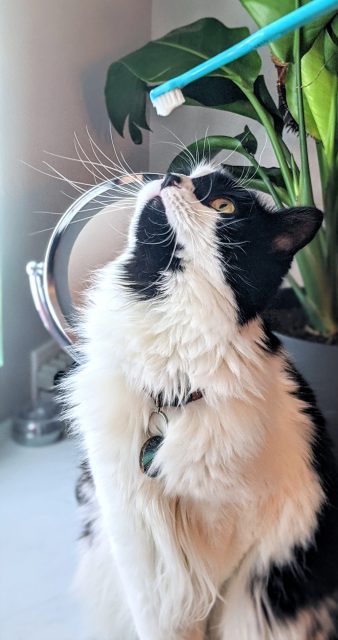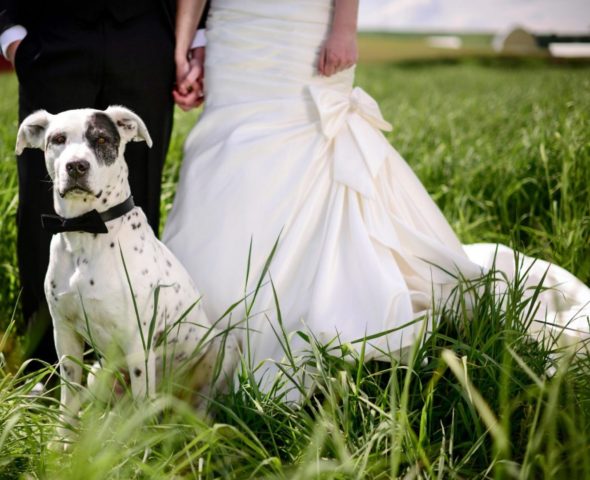Wouldn’t it be great if pets could brush their own teeth! How often do you brush your pets teeth? They actually need it daily.
Dental hygiene isn’t just for humans
There is nothing worse than going in for a first kiss, then BAM! Your date’s bad breath hits you like a ton of bricks. While a virtual date (may we suggest one via Fetchadate app?) is one way to stall on that eventual “chat” to brush and/or use breath mints, we can help you avoid bad breath smooches from your pooch. Here are five easy ways to promote fresh breath kisses from your furry companion.
1. Brush your pet’s teeth
You only need three items to brush your pet’s teeth:
- A pet toothbrush or finger brush
- Pet toothpaste
- Your pet’s favorite treat

Take it slow. Don’t rush into brushing your pet’s teeth. Start slowly by getting your pet comfortable with you touching their gums. Gently rub your fingers along your pet’s teeth and gum lines. Next, let them try out the toothpaste. Never use human toothpaste, which may upset their stomachs.
Let your pet lick the toothpaste from the brush. They may even like the taste because pet toothpaste comes in pet-friendly flavors like vanilla mint or chicken. To help you both get more comfortable, kneel or sit beside them to brush. Start with short sessions and work your way up to a couple of minutes, depending on your pet and breed.
While everyday cleaning would be ideal, I actually make it an every Sunday event. I know, we get busy and it’s not always easy to brush a pet’s teeth, but hopefully once a week is doable. If not, when getting your pet groomed, the add-on fee is estimated at $7 to have a pet groomer brush your pet’s teeth.
Always reward your pet
Don’t forget to reward your pet with their favorite treat after brushing. Even better, if their favorite treat is spreadable (such as peanut butter), add a little on the toothbrush with the toothpaste to build a positive association.

2. Buy pet dental toys
Dental toys are a fun way to promote your pet’s dental health by encouraging the production of saliva to wash away food debris. The toy removes plaque buildup. When choosing a dental toy, look for a toy with different types of chewing surfaces. This might include netting, bristles or rubber nubs. These toys should be durable and can last for several weeks, depending on your pet’s chewing habits!
3. Give your pet dental treats
In general, when selecting a dental treat, look for a treat that is firm or crunchy in texture and larger than kibble. When choosing a treat, you can reference the Veterinary Oral Health Council (VOHC) list of accepted products. These products have been awarded the VOHC Seal of Acceptance by meeting standards of plaque and tartar reduction.
4. Add dental additives to your pet’s food or water
Dental additives can be added to your pet’s food or water to improve dental health and promote fresh breath. Active ingredients in additives reduce the bad bacteria that build up on teeth. Although additives with no apparent taste can be used, always monitor your pet’s intake of food and water when using additives. If your pet’s consumption of water or food decreases due to a change in taste, don’t continue to use the product.

5. Visit your vet regularly
As always, consult your vet when choosing the best care for your pet. During a regular vet exam, they will check your pet’s teeth and gums. Together, you can discuss the best dental plan for your pet. If signs of dental disease are spotted, your vet may recommend a dental cleaning under anesthesia. I have my Greyhound’s teeth cleaned once a year. Some dog breeds such as mine need to be monitored more closely. Generally, routine health visits should be scheduled once a year for adult pets and twice a year for seniors. Puppies are examined more often because they get several shots initially.









